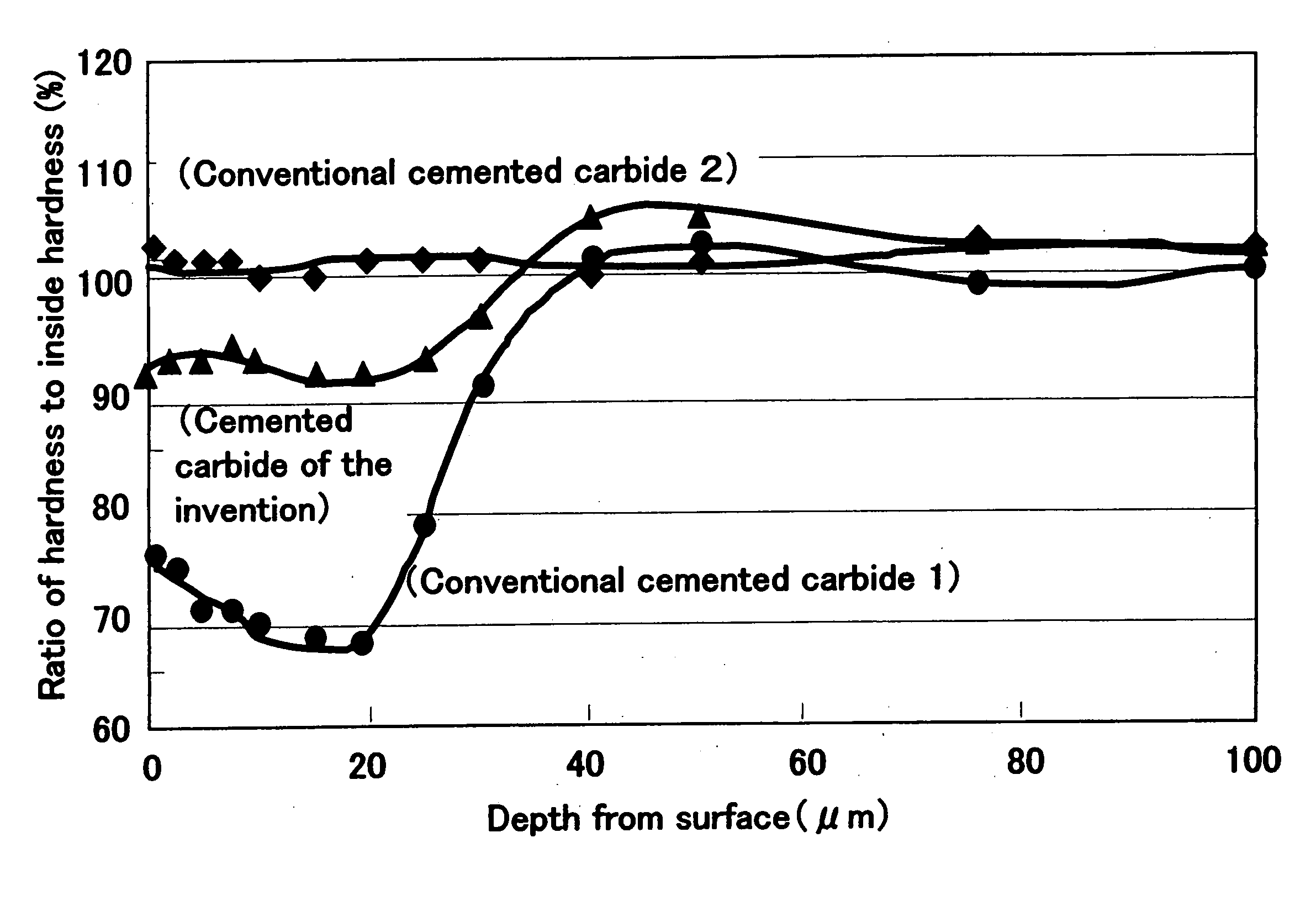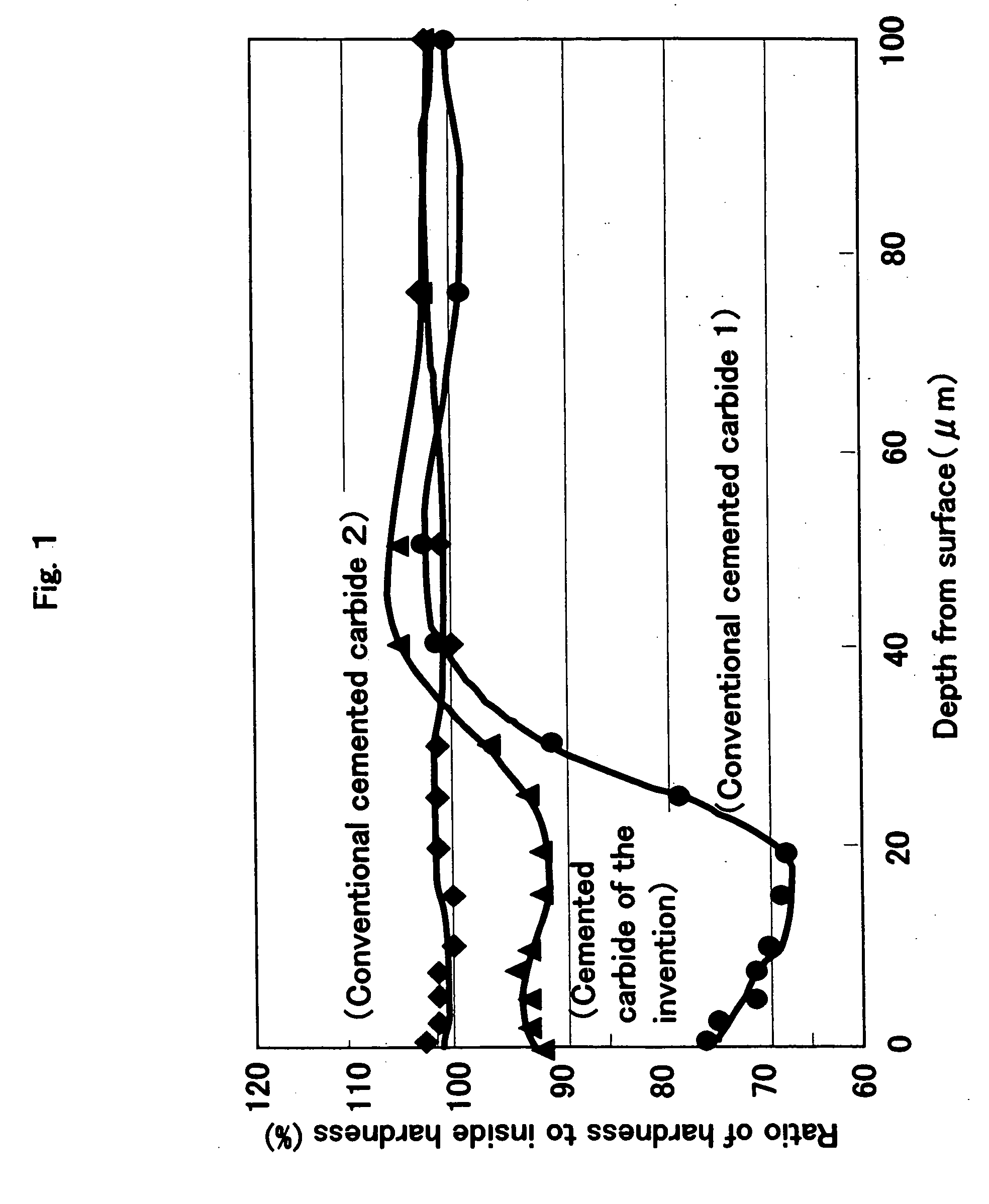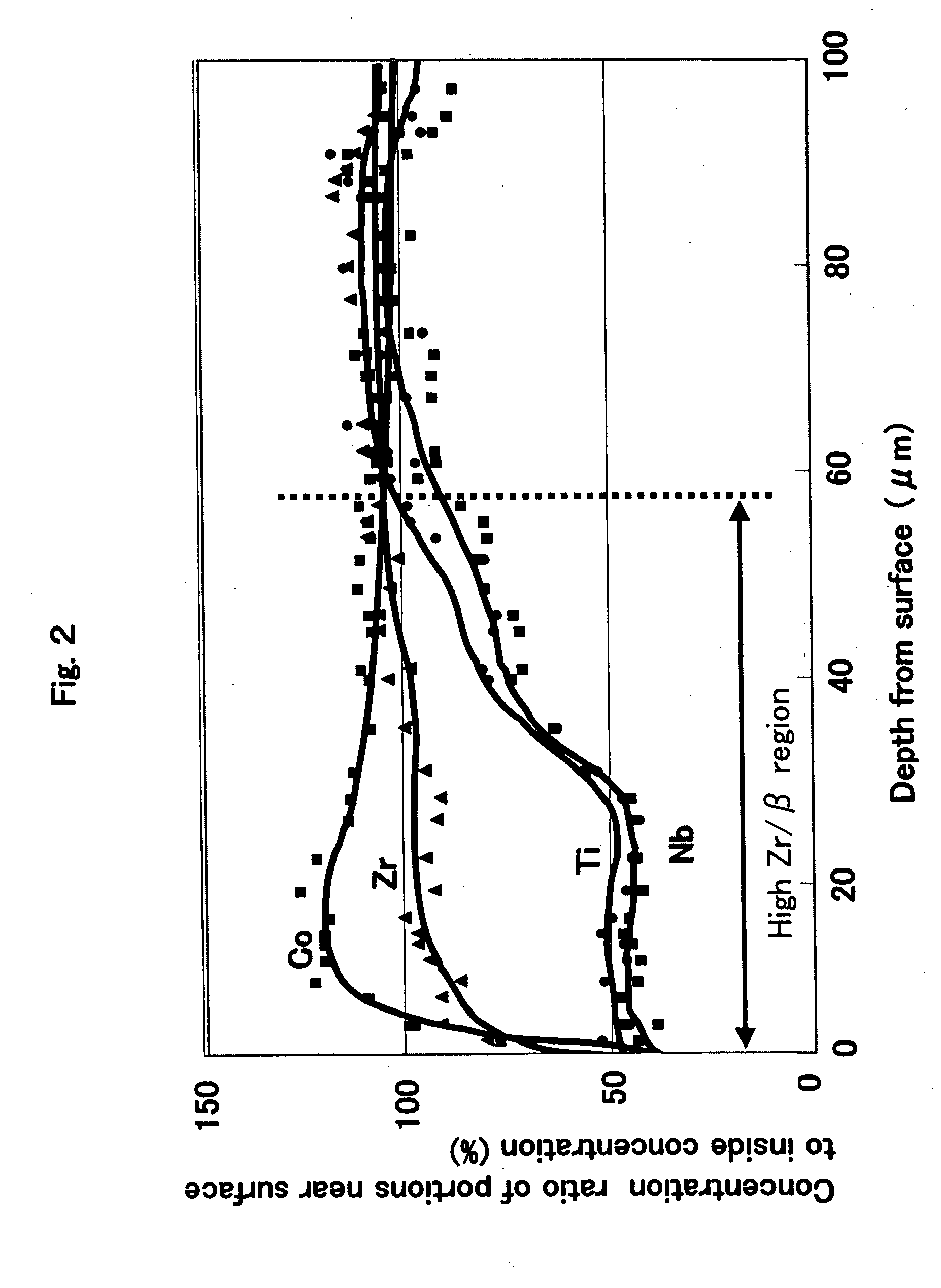Cemented carbide and cutting tool
- Summary
- Abstract
- Description
- Claims
- Application Information
AI Technical Summary
Benefits of technology
Problems solved by technology
Method used
Image
Examples
example
Example I
1st Cemented Carbide
Tungsten-carbide (WC) powder of 8.0 μm of mean particle diameters shown in Table 1, the metal cobalt (Co) powder of 1.2 μm of mean particle diameters and the compound powder of 2.0 μm of mean particle diameters shown in Table 1 were added and mixed by the ratio shown in Table 1.
After molding the mixture in cutting tool shape (SDK42, CNMG43) by the press forming, cemented carbide was produced by raising a temperature at the velocity of 10° C. / min. from a temperature lower 500° C. or more than a sintering temperature, followed by sintering at 1500° C. for 1 hour.
In the cut side in the direction of oblique section including the arbitrary surface, hardness was measured toward the inside in the portion which is equivalent to each depth from the surface.
The measurement was performed by using the micro Vickers equipment (MVK-G3) made from Akashi Corporation, on conditions of 200 g of loads and 10 seconds of retention time. The hardness in each depth is...
example ii
2nd Cemented Carbide
Tungsten-carbide (WC) powder of a mean particle diameter shown in Table 3, the metal cobalt (Co) powder; of 1.2 μm of mean particle diameters and the compound powder of 2.0 μm of mean particle diameters shown in Table 3 were added and mixed by the ratio shown in Table 3. After molding the mixture in cutting tool shape (SDK42) by the press forming, cemented carbide was produced by raising a temperature at the velocity of 10° C. / min. from a temperature lower 500° C. or more than a sintering temperature, followed by sintering at 1500° C. for 1 hour.
About three arbitrary sections of the obtained cemented carbide, X-ray diffraction analysis was performed using Kα1 ray of Cu vessel at angle of diffraction 2θ=30-80°, mesurement time 0.5 sec, voltage 40 kV, and current 40 mA, with the X-ray-diffraction-analysis equipment (RINT1100) made by Rigaku Denki company. Furthermore, in order to remove the mutual error of all data, the peak which WC (100) side in each measurem...
example iii
3rd Cemented Carbide
Tungsten-carbide (WC) powder whose mean particle diameter is 9 μm containing Iron (Fe) and chromium (Cr) in the amount shown in Table 5, metal cobalt (Co) powder and compound powder were weighed at the ratio shown in Table 5, and these powders were introduced in a attriter mill which has an inner wall, a media, and a stirring arm which consist of cemented carbide of 99.99% or more of purity.
After carrying out wet grinding for 18 hours by adding 2-propanol and granulating by spray dry, it molded in cutting tool shape (SDK1203) by the press forming.
Next, the obtained green body was setted to the vacuum sintering furnace, predetermined-time retention was carried out with the 1st sintering temperature shown in Table 5 which carried out a temperature up at the velocity for 12° C. / min., the temperature was lowered to the 2nd sintering temperature at the temperature fall velocity shown in Table 5, predetermined-time retention was carried out with this 2nd sinterin...
PUM
| Property | Measurement | Unit |
|---|---|---|
| Length | aaaaa | aaaaa |
| Fraction | aaaaa | aaaaa |
| Fraction | aaaaa | aaaaa |
Abstract
Description
Claims
Application Information
 Login to View More
Login to View More - R&D
- Intellectual Property
- Life Sciences
- Materials
- Tech Scout
- Unparalleled Data Quality
- Higher Quality Content
- 60% Fewer Hallucinations
Browse by: Latest US Patents, China's latest patents, Technical Efficacy Thesaurus, Application Domain, Technology Topic, Popular Technical Reports.
© 2025 PatSnap. All rights reserved.Legal|Privacy policy|Modern Slavery Act Transparency Statement|Sitemap|About US| Contact US: help@patsnap.com



